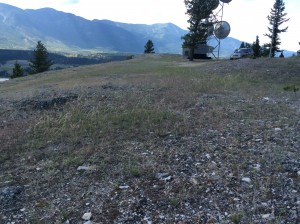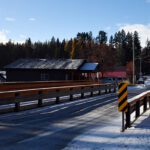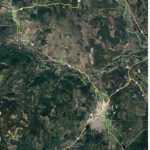Home »

Invasive plant partnership can be template
It is inspiring to see what can be achieved when various groups get together for a common goal.
We all appreciate the natural beauty, biodiversity, and resources in the East Kootenay region and we all need to protect these values. Invasive plants are a threat to our environment, economy, and social aspects, but we need to work collaboratively to effectively manage these weeds.

In some instances, shared land use may obscure who is actually responsible to manage a site where there are a variety of potential impacts to these natural values. For instance, communication towers on Crown land often have several tenure-holders with a permit to occupy a site, as well as the obligation to keep the premises in a clean condition.
In 2014, Allana Oestreich, Ecosystems Biologist with the Ministry of Forests, Lands, & Natural Resource Operations (MFLNR), encouraged two tenure holders to maintain the ecological integrity of a joint tower site which supports native grass forage for bighorn sheep –and was threatened by the encroachment of several invasive plant species.

The tower site is on the east side of Columbia Lake near Canal Flats, providing services for CBC Transmission and Shaw Communications. MFLNR, HCTF, CBC, and Shaw partnered with the East Kootenay Invasive Plant Council (EKIPC) to determine how to best manage the access road and site. In a shining display of corporate stewardship, funds were pooled by all partners to treat spotted knapweed in order to encourage the growth of native plant species.
EKIPC’s Field Operations Coordinator, Katie Young, monitored the effectiveness of the treatments this summer and was astounded at the success of the treatments. “As I drove to the site, I thought I was on the wrong road because the areas previously infested with knapweed were now weed-free.”
In addition to monitoring the site, Young released hundreds of weevils, which feed exclusively on the target species, acting as a biological control.
Oestreich intends to use this partnership as a template for other Crown land occupiers to ensure compliance with the provincial Weed Control Act – preventing the spread of invasive species
“Collaborative partnerships are the best way to solve any problem, we are all a part of the solution,” she said.
Lead image: EKIPC summer crew Blaire Smith (left) and Hope Blissett (right) releasing knapweed eating weevils at communications tower east of Columbia Lake.
East Kootenay Invasive Plant Council







